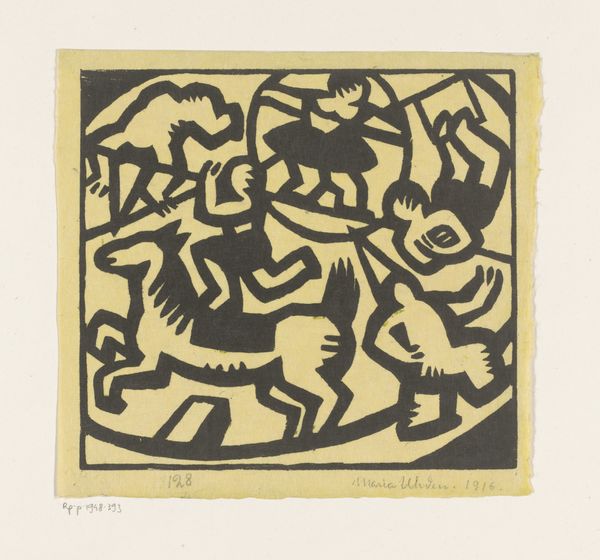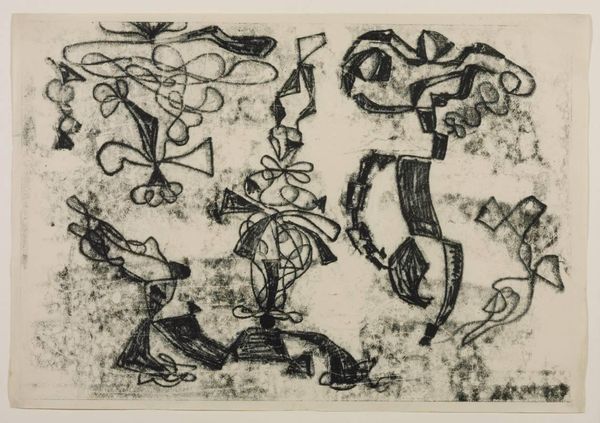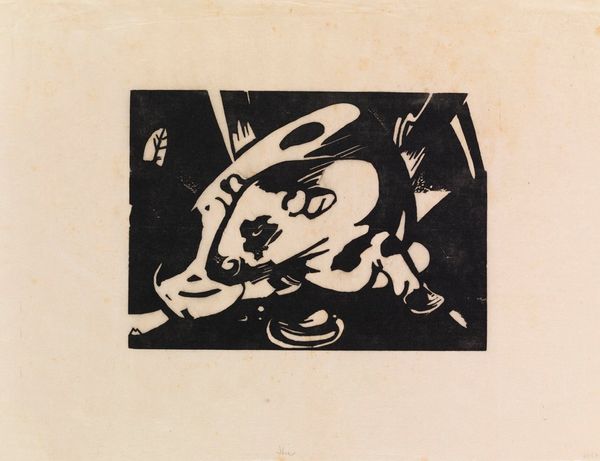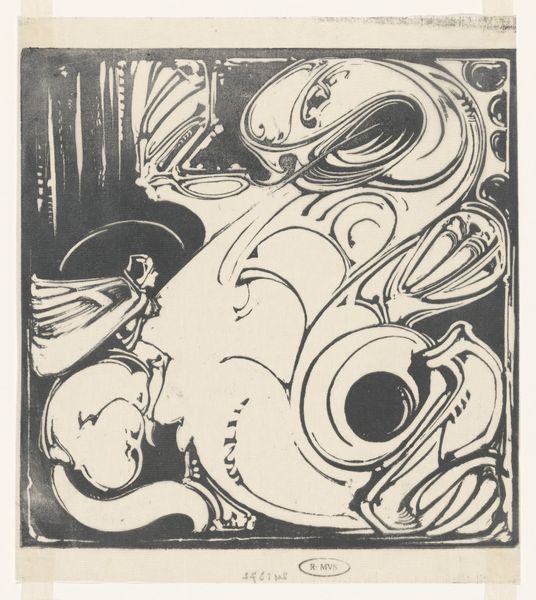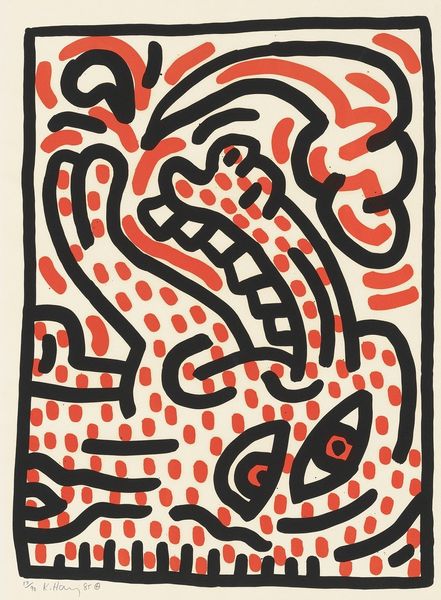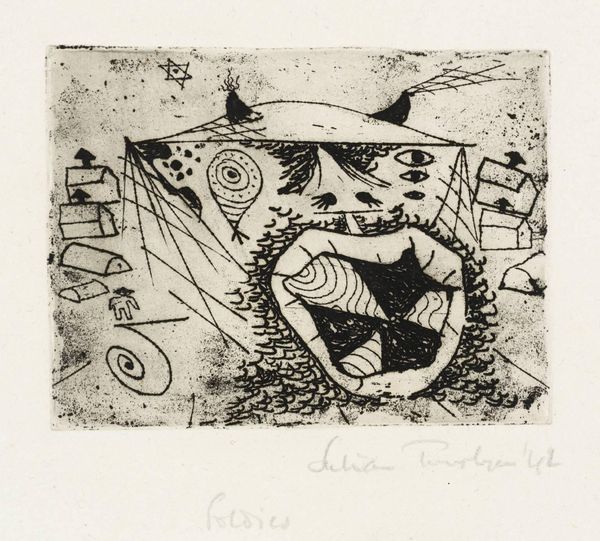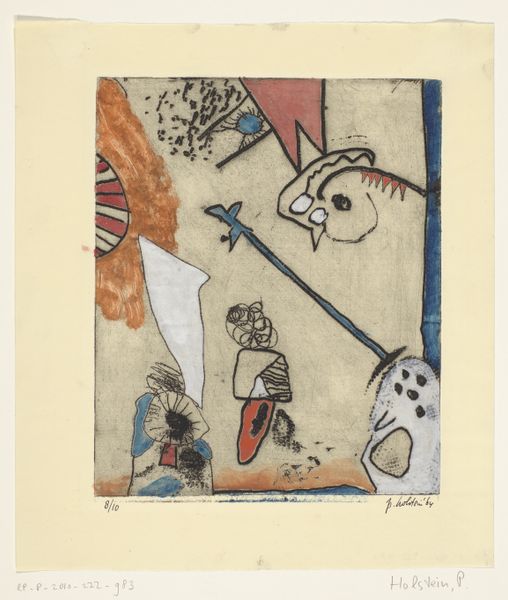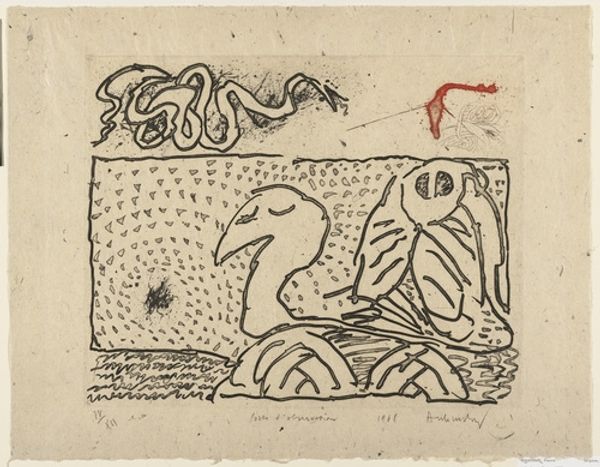
Dimensions: image: 127 x 149 mm
Copyright: © Succession Miro/ADAGP, Paris and DACS, London 2014 | CC-BY-NC-ND 4.0 DEED, Photo: Tate
Curator: This is Joan Miró's "Composition," an etching dating from 1947, part of the Tate's collection. It’s a small work, just 127 by 149 millimeters. Editor: It’s playful! Feels like a secret code dreamt up by a joyful alien. The red-orange pops against the stark background. Curator: Miró was deeply engaged with the Surrealist movement, which sought to unlock the creative potential of the unconscious mind. Editor: Yes, that makes sense. I can see a dreamscape in here. These forms feel so free, like doodles sprung to life. Is that a moon, or a smile? Curator: Perhaps both. Miró, of course, lived through some very turbulent times, including the Spanish Civil War and World War II. Editor: I see defiance of gravity, a sense of joy amidst all the chaos. It’s like saying, even in the darkest times, art can bloom. Curator: Indeed, and Miró's work is a testament to the power of the imagination to transcend difficult realities. Editor: This little etching is a vibrant reminder to embrace the absurd and find light in the unexpected.
Comments
Join the conversation
Join millions of artists and users on Artera today and experience the ultimate creative platform.
tate about 1 month ago
⋮
Joan Miró made the small Composition at Stanley William Hayter’s famous printing studio, Atelier 17, in New York in 1947. It extends some of the artist’s earlier imagery, particularly the moon and the truncated woman. It also shows the emergence of amoebic shapes that Miró first developed on this American trip and became typical of his subsequent imagery. Gallery label, July 2011
